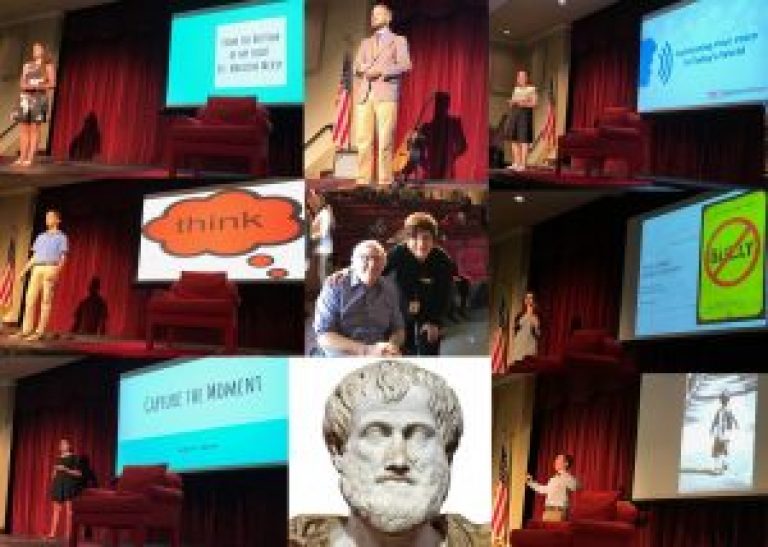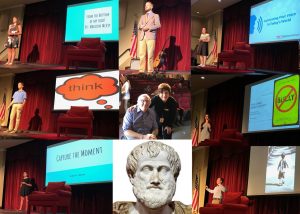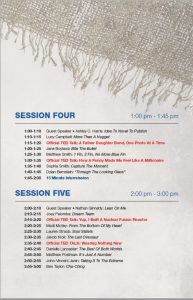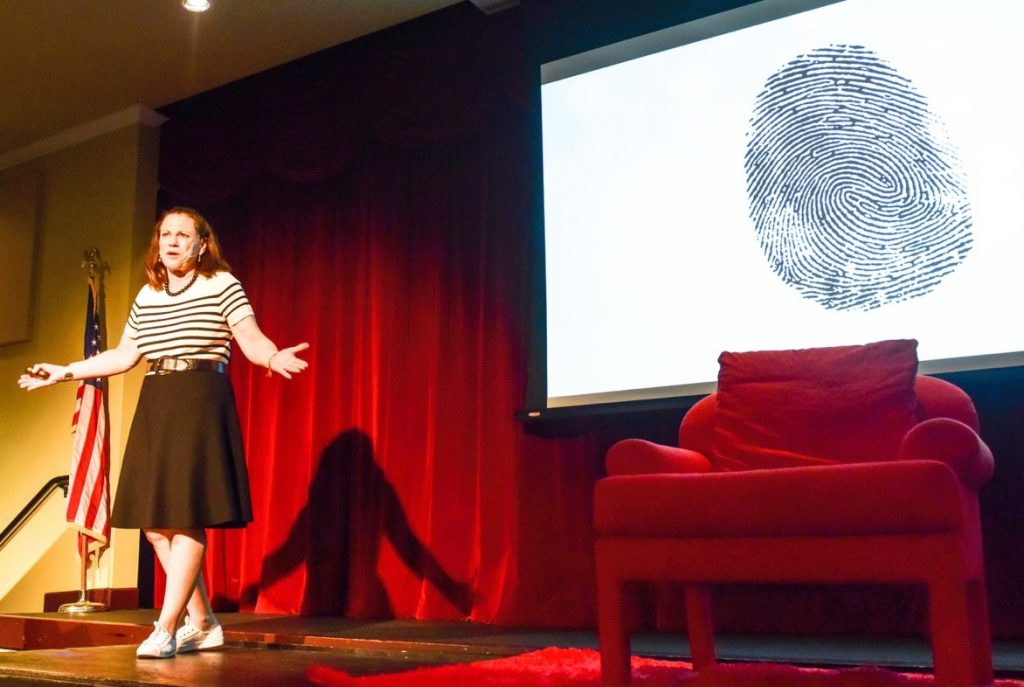 Paws-itive Press
Paws-itive Press
Dog Park Etiquette
By Barbara Masi
Many of us are using dog parks to exercise/socialize our dogs – when we don’t have a fenced in yard or play dates with other dogs on the block where we live. They can be an awesome place for your dog to play as long as everyone is on the same page as to the “rules” of using a dog park. People seem to think that it is an area for dogs to go wild and for the humans to allow misbehavior. It is not. Here are some guidelines for you when using a dog park – they are compiled from suggestions I have read online and from either friends or my own personal experience using dog parks.
Wear appropriate clothing for going to a dog park – and don’t bring a purse. Fanny packs or your pockets are good places for your keys, cell phone and whatever else you feel you need while at the park. Cell phone should be used for emergencies only at a dog park – it is not the place to “chat” with friends. You need to be alert to what is going on at all times. Don’t bring the latest novel to read. You should never turn your back on your dog and the activity that is occurring in the dog park.
A few people who are unmannerly will ruin the experience for all – so watch that others are also attentive to their dogs and follow the rules – or leave and find another dog park or go back when that person has gone from the park.
Do not bring an unvaccinated dog or puppy to a dog park. This encourages a rapid spread of disease which can sometimes be fatal. Do not bring a sick dog to a dog park. Bringing a female in heat is irresponsible, yet some people do not monitor their dogs for this.
Do not bring young children into the dog park. You are there to be with the dog and other dogs can / may run and knock over the stroller or the child. This is not the place to go to babysit. Attention needs to be directed to your dog and the others he/she is playing with. Also, children should not be playing soccer (or similar games) right outside the fence of the dog park. This will encourage the dogs to run the fence line in order to join in on the game and may start a frenzy among the dogs inside the fence.
Don’t bring too many dogs. Some dog parks have a limit on the number of dogs any one person can bring to a dog park. Your dogs form a pack at your home and this pack mentality may continue at the dog park. This may be detrimental to their interacting with the other dogs at the dog park and they may become aggressive as a pack. Also, you cannot be two places at once, so do not bring a small dog for the small dog park and a large dog for the large one, unless you bring a family member or friend to sit in the other fenced area with the other dog. Never leave a dog alone in the fenced area.
Check to see that there are not an abundance of intact males in the dog park. If you see quite a few, do not bring your dog in the park until the number is reduced to just a couple.
Observe the dogs already in the dog park before letting your dog loose among them. Do not put small dogs in bigger dog pens, nor should you put larger dogs in smaller dog pens. No matter how well the smaller dog gets along with bigger dogs (or vice versa) this is inviting disaster. Make sure the dog park you go to has pens for various sizes of dogs – small, medium and large (or at least small and large).
When you enter the park, remember that a group of dogs may come to “greet” you and the newcomer. This can be intimidating and may overwhelm the newcomer. It may cause a skirmish as the new dog enters, so take it slow and easy.
If your dog digs a hole, fill it in. If your dog poops, clean it up. Supervise the dogs constantly and interrupt any rough play. Make sure there is clean water available for the dogs to drink. Beware of standing puddles of water at dog parks. Standing water breeds disease and a wide variety of parasites and their eggs.
If you are afraid of certain breeds of dogs, don’t go to a dog park. Your nervousness and concerns may be transmitted to your dog, thus encouraging a confrontation which could wind up with a dog getting injured – either your dog or another one at the park.
Don’t bring highly sensitive dogs to a dog park where there are lots of dogs. This atmosphere will overwhelm them. The “rule of thumb” is no more than 2 dogs per every 20 yards of space. But you still may overwhelm a sensitive dog, and it is highly recommended that you make play dates with friends with like dogs in the yard at home rather than force a sensitive dog into a dog park situation.
Do not bring toys or treats to a dog park. These are two things that can / might create a disturbance and encourage possessiveness by your dog. If someone else is in the park with a toy or treats, wait until they leave if you feel that a situation might arise. (This also applies to snacks for you while at the dog park – eat before you go or afterwards – not while at the dog park).
Don’t let a dog off lead in a dog park if he/she is not responsive to verbal commands. Dogs should be taught the elementary commands before they are permitted to interact in this type of community. (Training should be done to have a well-mannered dog in any circumstance.) Dogs taken to a Dog Park should have a very strong Recall. Train them to Come when called. Train them to Leave It! DO NOT let dogs smell feces on the ground that may be loaded with worms and worm eggs.
If your dog is being bullied by another dog (or dogs) remove him/her from the dog park. Conversely, if your dog is doing the bullying, take him/her away from the dog park.
When at a dog park, there is a lot of advice passed from person to person. Use discretion as to what you absorb as these are dog owners and not professionals. If you need advice, go to a professional dog trainer with your questions
Watch for dog body posture or communication signals – on your dog and on the others in the park. Dogs can give a warning that something is “wrong” and you may be able to stop it before it escalates if you observe the body language for stress, fear, and tension as well as that which occurs for play and enjoyment. Know when your intervention is required and when the dogs are able to handle the situation on their own.
When you take your dog to a dog park you need to be aware that there are certain risks involved regarding injury to your dog or that he/she may injure another dog at the park. Be vigilant – be careful and you and your dog will be able to enjoy the time you spend together at the dog park.
There are some dog parks in areas of the country that allow you to “rent” the park for an hour — perhaps one day a week. There are groups of dog owners (some breed specific) that will rent the park for their select group of dogs that are well mannered and play well together. It is an ideal way to enjoy the dog park if you are lucky enough to have this available in your area of the country. The dogs get used to their set of friends and are able to play without stress. The introduction of new friends is controlled by the person renting the space for that period of time. Request information on this at your local dog park if you are interested in or feel better with this type of interaction for your dog.




 THE PUSH UP
THE PUSH UP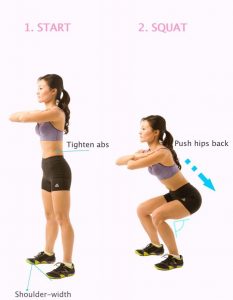 THE SQUAT
THE SQUAT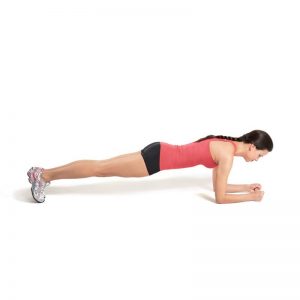 THE PLANK
THE PLANK
 Teen Talk
Teen Talk

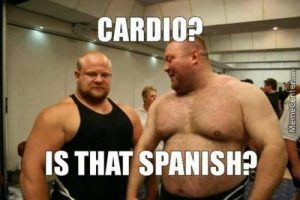
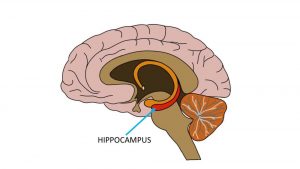

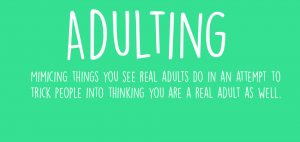

 Mayor’s Column
Mayor’s Column
 Living Green
Living Green
 Cantankerously Yours
Cantankerously Yours
 Natural Insight
Natural Insight